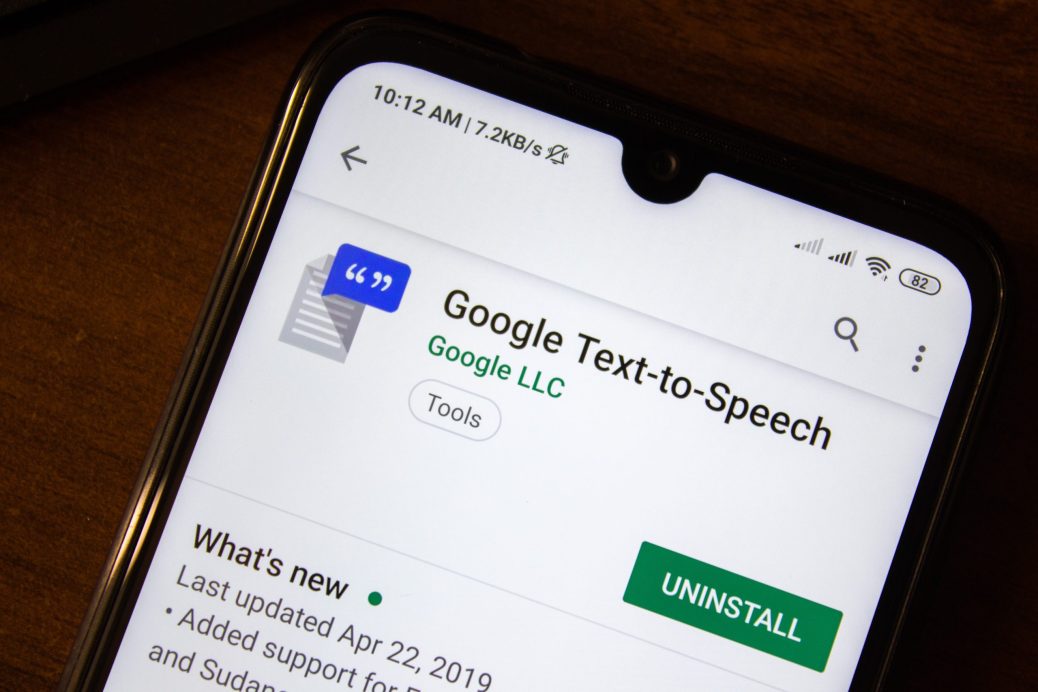The human voice is, without a doubt, one of the most intricate and beautiful instruments on the planet.
In our digital age, the quest to recreate this marvel through machines has become an aspiration for many. At the heart of this endeavor is text-to-speech (TTS) technology.
In this article
- What is Text-to-Speech Technology?
- Google’s Journey with Text-to-Speech
- WaveNet: The Pinnacle of Google’s TTS
- Parameters and Training: Behind the Scenes
- 1. Data Collection
- 2. Analysis
- 3. Simulation
- The Broader Application of Google TTS
- What This Means for the Voice Over Industry
- Conclusion
Sign Up for Free Today
Find the perfect voice for your job today, or sign up as a talent to start booking voice over work on Voices.
In today’s fast-paced technological landscape, few companies have made strides as significant as Google.
Their approach to text-to-speech is as innovative as it is captivating. If you’ve ever wondered how Google’s TTS technology transforms mere text into lifelike speech, you’re in the right place.
What is Text-to-Speech Technology?
Before diving into the depths of Google’s approach, let’s ensure we understand the basics. Text-to-speech is a digital system that converts written text into audible speech.
This technology has found its way into e-learning platforms, audiobooks, voice assistants, and even voice over projects where natural speech is required but human voices aren’t feasible.
Google’s Journey with Text-to-Speech
Google’s involvement with TTS began in earnest with its acquisition of DeepMind in 2014. This AI research lab laid the groundwork for what would become one of the most advanced TTS systems in existence: WaveNet.
WaveNet: The Pinnacle of Google’s TTS
Traditional TTS models used concatenated pieces of recorded speech to produce voice. These were often rigid, lacked intonation, and sounded robotic. But with WaveNet, things took a quantum leap forward.
WaveNet employs a deep neural network, which is a type of machine learning architecture. But what sets it apart is its convolutional approach. Instead of simply stitching pre-recorded clips together, it generates speech one sample at a time (at a whopping 16,000 samples per second!).
This allows for incredible nuance. It can simulate breaths, lip smacks, and various subtleties, making the resultant voice almost indistinguishable from a human’s.
Parameters and Training: Behind the Scenes
1. Data Collection
Google feeds vast amounts of voice data into its model. This data is typically snippets of human speech, which the system uses to learn and emulate human intonation and articulation.
2. Analysis
The system then analyzes the data, identifying patterns, and understanding nuances. This is crucial for languages with complex intonations, like Mandarin or intonation in voice over projects.
3. Simulation
Post-analysis, the deep learning model starts simulating voice patterns. With time and training, the predictions get better, leading to clearer and more natural speech.
The Broader Application of Google TTS
Google’s TTS isn’t just about reading text. It’s a core component of many of Google’s flagship products:
– Google Assistant: Powers the voice, ensuring interactions feel more natural.
– Google Translate: Enhances the spoken translations, making it easier for users to understand the pronunciation and intonation of unfamiliar words.
– Google eBooks: For those who’d rather listen than read, Google’s TTS can turn any eBook into an audiobook.
– Google Maps: A clearer, more natural voice gives directions, enhancing the navigation experience.
What This Means for the Voice Over Industry
Google’s advancements in TTS have ramifications for industries beyond technology. For voice over artists and platforms like Voices, it raises essential questions about the future of voice work.
It’s essential to remember that while TTS can replicate speech patterns, it can’t yet capture the emotions, passion, and the unique character that a human voice brings.
Tools like Google’s TTS might be a boon for specific applications, but they can’t replace the authenticity of a real human voice. This sentiment echoes what many professionals feel; that while technology can replicate, it cannot create.
Conclusion
Google’s TTS technology, especially with its WaveNet model, is an impressive feat. It’s an ode to the possibilities that lie at the intersection of technology and human creativity.
As with all technology, it has its place. While it brings lifelike speech to devices and applications, it also underscores the irreplaceable value of the human voice; with all its warmth, depth, and emotion.
From voice assistants guiding us through our day to audiobooks narrated by machines, we’re at the cusp of an exciting auditory future. How we tune in, interact, and resonate with these voices will define the next chapter of our digital journey.

Leave a Reply